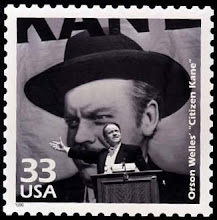2011 is the 10th Anniversary of an event that
never happened, when the discovery of an alien monolith on the moon propelled astronaut
Dave Bowman to Jupiter and beyond.
I have loved 2001: A Space Odyssey (Kubrick, 1968) for as
long as I can remember. There are movies
I remember seeing earlier, as a kid, but not many. It’s always been a part of my cultural memory
(I was born two years after it was made), even though I’m not quite sure why—it’s
exactly the kind of movie my parents would’ve frowned upon: opaque,
irreligious, confusing, slow.
But for me, long before I ever remember stepping into a
museum or being exposed to literature (and not just kid books), 2001 was my
window into the world of Art. Most of
the movies I talked about were simply rundowns of things we loved, sensory
highpoints and greatest hits. But 2001
sparked debate between me and my nerdier classmates. Was HAL evil?
What did the room where Dave ends up mean? What was the Starchild? Was the movie any good or not?
All films, all stories before 2001 had closure, clarity, unambiguous
arcs. Characters might’ve had complexity,
but the final result was fairly clear cut.
But 2001 offered nothing conclusive, no easy answers. This was a brave new world of observation,
interpretation, nuance, and judgment.
My love for classical music started with 2001, and not just in
the romantic sweep of the space ballet with Johann Strauss or the thunderous echo
of anticipation from the other Strauss, Richard. For there was nothing sadder than the
heartbreaking loneliness of space through Khachaturian or more hypnotic than the
atonal fusion of voices and discord as Ligeti took us into another dimension of
time and distorted landscape, beyond the monolith.
The best Art changes, evolves with us, but remains both
personal and universal. That so many things
about the world of 2001 didn’t come true (yet) is incidental. For it is fixed neither in time nor
location. I get why not everyone will
like it. The best Art also refuses to
placate when it would rather confront. Some
people are never satisfied unless there is an explanation, an answer. But Art is like Life, and we make of it what
we can and what we want.
There came a tipping point with me quite early when I was OK
with having 2001 (and by extension, many more subsequent books and movies and
paintings) stay unresolved, even if I couldn’t fully articulate why. All I knew was that, whatever the Starchild
meant, or wanted, or was, it was a beautiful thing. Transformative, and full of Hope. Rebirth.
Renewal. Promise. An alien observer, it still spoke to the human condition and
that’s what made it marvelous and momentous to me.
Years later, when I was in college, I saw 2001 for the first
time on the big screen. It became even
more towering then. The silence of space
felt like the TV was on mute in my living room, but in the vastness of Berkeley’s
UC Theater, it was unnerving, terrifying.
The most despondent of birthdays, the most clinical of murders, the saddest
dirge of a dying computer all became bigger, epic, more visionary. And that jump cut! It still makes me gasp in amazement.
I am a theatrical fetishist.
I rarely rent videos and own far fewer DVDs than most people would
expect. I usually operate on the
assumption that if I don’t catch a film in the theater, I’m unlikely to ever
see it at all (or at least for many years until it migrates to cable). But there are still my favorites that I
return to as comfort food or as a reminder of things I love and care about, even
if my cathode ray at home doesn’t do them full justice.
But not 2001. That’s
the one film I never watch at home. It
is not necessarily my favorite film, but it is bigger than life to me, so every
time it pops up in a revival theater here, I do my best to go see it. Because it is the future and the past, man
and machine, history and possibility mingling together to sift and to
embrace. There are few things in this
world that make me happier.
The X-wing fighter from the Star Wars issue (Scott #4143m) is paired with a spaceship from another scifi issue years earlier (Scott # 2744) and the Australia and Cuba stamps. Pioneer and Jupiter had three stamps (Scott #s 1556, 2573, and 3189i, the last of which was part of the Celebrate the Century series). 2001 won an Oscar for Special Effects (Scott # 3772i) and the Sound stamp (# 3772j) is also part of the American Filmmaking series. The Egg Nebula (Scott # 3887) was part of a larger astronomy issue.
My Top 10 Science Fiction films
1. 2001: A Space Odyssey (Kubrick, 1968)
2. Close Encounters of the Third Kind (Spielberg, 1977)
3. Bride of Frankenstein (Whale, 1935)
4. The City of Lost Children (Jeunet/Caro, 1995)
5. The Incredible Shrinking Man (Arnold, 1957)
6. Metropolis (Lang, 1926)
7. Forbidden Planet (Wilcox, 1956)
8. Eternal Sunshine of the Spotless Mind (Gondry, 2004)
9. The Terminator (Cameron, 1984)
10. The Thing (Carpenter, 1982)


